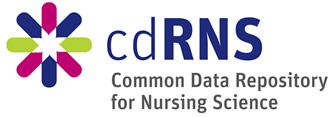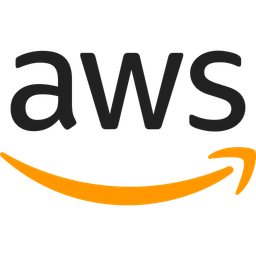A system for data sharing and collaboration
Building on concepts originally developed for the National Database for Autism Research (NDAR), BRICS began as a joint effort between the Department of Defense (DOD), Department of Health and Human Services (HHS)/National Institutes of Health (NIH): National Institute of Neurological Disorders and Stroke (NINDS), and the Center for Information Technology (CIT). Since then, it has continued to evolve over a rich 10-year history, through collaborations with partners like the Parkinson’s Disease Biomarkers Program (PDBP) and the Federal Interagency Traumatic Brain Injury Research (FITBIR).
Data and Specimen Hub (DASH)
The NICHD Data and Specimen Hub (DASH) is a centralized resource that allows researchers to share and access de-identified data from studies funded by NICHD. DASH also serves as a portal for requesting biospecimens from selected DASH studies.
To be deployed this summer 2025.
Federal Interagency Traumatic Brain Injury Research (FITBIR)

Joining Forces to Diagnose and Treat Traumatic Brain Injuries
Traumatic brain injury (TBI) is the leading cause of death and disability in children and adults ages 1 to 44 and is a serious medical problem for both military and civilian populations. To better understand its impact and reduce TBI-related deaths, the Department of Defense (DoD) and the National Institute of Neurological Disorders and Stroke (NINDS) worked together to create FITBIR, the Federal Interagency Traumatic Brain Injury Research program.
FITBIR is built with a set of reusable and scalable BRICS components, which helps researchers manage the large volume of complex data generated by studying the human brain. Unlike other TBI informatics systems, FITBIR covers the full spectrum of age (children and adults), injury severity (concussion to death), and time (pre-hospital to chronic). As of January 01, 2024 the system houses data for over 100,000 research subjects have been submitted to the FITBIR system including over 178,000 Clinical Imaging Datasets.
Today, FITBIR supports more than 160 studies and spans a hundred Principal Investigators (PIs), dozens of universities and research systems, the Department of Defense, and the National Institutes of Health. With a secure platform for defining, accessing, and sharing data, researchers are moving closer to discovering new ways to diagnose and treat TBI. View FITBIR Summary Data Visualization.

CoreTrustSeal is an international, community based, non-governmental, and non-profit organization promoting sustainable and trustworthy data infrastructures.
National Trauma Research Repository (NTRR)

Trauma is defined as a bodily wound or shock produced by sudden physical injury, such as that from violence or an accident, including vehicle crashes, severe falls, gunshots or knives, blunt force, blasts and burns. Trauma is uniquely defined by the severity and location of the injury. Trauma is the #1 cause of death (from age 1 to 46) overall in the United States. The National Trauma Research Repository (NTRR) is a comprehensive web platform for managing research datasets to support data sharing among trauma investigators. It is a central, cloud-based repository for the clinical data resulting from both military funded and civilian research efforts. NTRR repository data covers the entire patient care trajectory: from injury prevention, point of injury, en route care, hospital care, rehabilitation and long-term outcomes. The system allows researchers to share original data sets and request shared data sets for secondary analyses.
The Informatics Division of Military Traumatic Brain Injury Initiative (MTBI2)

A Catalyst For Brain Injury Research
The MTBI2 is a federal medical research program that has transformed collaborative interactions between the U.S. Department of Defense, the National Institutes of Health, and the Walter Reed National Military Medical Center. The Informatics Division provides services such as electronic data capture and reporting for clinical protocols, participation in national TBI research and data repository community, research computing infrastructure, integration of MTBI2 technology requirements, and maintenance of MTBI2 central data repository. In addition, the Informatics Division has played the important role of providing technical and clinical expertise in steering the development of multiple BRICS modules used by FITBIR.
Parkinson's Disease Biomarker Program 


 Accelerating The Search For Signs Of Parkinson's Disease
Accelerating The Search For Signs Of Parkinson's Disease
Parkinson’s disease affects more than six million people around the world; One major hurdle in the treatment of Parkinson’s has been a lack of biomarkers – telltale changes in the body that can be used to predict, diagnose, or monitor a disease. The National Institute of Neurological Disorders and Stroke (NINDS) started the Parkinson’s Disease Biomarker Program (PDBP) to accelerate the advancement of Parkinson’s diagnoses and treatments.
At the center of the PDBP effort is its Data Management Resource (DMR). Built from BRICS components, the PDBP DMR uses a system of standardized data elements and definitions. This makes it easy for researchers to compare data to previous studies, access images and other information, and order biosamples for their own research.
While the program owes much of its progress to BRICS, the partnership is mutually beneficial. PDBP has made a number of contributions to the BRICS system, such as the development of the ProFoRMS data capture module and shared NINDS Dictionary. In addition, an investment into a BRICS plug-in for managing biosamples resulted in a partnership with the Michael J. Fox foundation. View Parkinson's summary data.
NEI Data Commons

National Ophthalmic Disease Genotyping and Phenotyping Network (eyeGENE)
The National Ophthalmic Disease Genotyping and Phenotyping Network (eyeGENE) is a research venture created by the National Eye Institute (NEI), part of the National Institutes of Health (NIH), in response to promising scientific discoveries in genetics. eyeGENE aims to advance studies of eye diseases and their genetic causes by giving researchers access to DNA samples, clinical information, and patients looking to participate in research studies and clinical trials. View eyeGene Data Exploration.
Prowl: The Patient-Reported Outcomes with LASIK (PROWL) study in the LASIK Quality of Life Collaboration Project assessed visual symptoms both before and after their LASIK surgery to identify changes over time. The study also measured the impact symptoms directly had on performing usual activities, which had not previously been done.
AMD Integrative Biology Initiative: Age-related macular degeneration (AMD) is a disease that blurs the sharp, central vision you need for “straight-ahead” activities such as reading, sewing, and driving. AMD affects the macula, the part of the eye that allows you to see fine detail. In an effort to build on the AREDS2 investments, the NEI is working to correlate clinical AMD disease phenotypes in a cellular model with patient genotype and imaging information in the newly created AMD Integrative Biology Initiative, make this Initiative available to the research community with induced pluripotent stem cells (iPSCs) derived from AREDS2 participants with specific genetic risk factors for AMD.
For additional BRICS Data Support: View NEI Data Commons.
National Institute Of Nursing Research (NINR)
Decommissioned*

The mission of the National Institute of Nursing Research (NINR) is to promote and improve the health of individuals, families, and communities. To achieve this mission, NINR supports and conducts clinical and basic research and research training on health and illness, research that spans and integrates the behavioral and biological sciences, and that develops the scientific basis for clinical practice. The NINR, part of the National Institutes of Health (NIH), is a leading supporter of clinical studies in symptom science and self-management research. To harmonize data collected from clinical studies, NINR is spearheading an effort to develop CDEs in nursing science.
Clinical Informatics System For Trials and Research (CISTAR)

https://cistar.ninds.nih.gov
Clinical research is a dynamic, complex and constantly evolving endeavor/enterprise that requires extensive resources to develop and maintain a clinical information system meeting clinical investigator's diverse needs. CiSTAR is the first attempt of an international collaborative development project for a clinical research information system at NIH. The system merges two existing clinical information management systems into a re-designed modular system to support various types of clinical trials and research. It is recognized that every clinical study design is unique; therefore, to encourage biomedical innovations the information system must be flexible to adopt to various types of data collection and management needs.
CiSTAR is the first international collaborative development project for a clinical research information system at NIH. Using five BRICS modules, CiSTAR merges two existing systems into one to support clinical trials and research.
The NIH/NCATS Radar® Program
RaDaR Rare Diseases Registry Program, NCATS
https://rarediseases.info.nih.gov/radar/global-unique-identifier-generator
The NIH/NCATS RaDaR Rare Diseases Patient Registry Data Repository/GRDRSM program is designed to advance research for rare diseases and, through the application of scientific insights gained, to further research for common diseases as well.
- International Community
- GUID and Accounts Standalone
- Private Hosted Solution
NIA Pilot Site
https://brics-demo.cit.nih.gov/ Only accessible intramurally
The BRICS National Institute on Aging (NIA) pilot project Platform includes four different studies, which are:
- Health & Retirement Study (HRS)
- Health, Aging, and Body Composition Study (Health ABC)
- Minority Aging Research Study (MARS)
- Louisiana Osteoporosis Study (LOS)
On the level of cohort discovery, BRICS helps to assemble multi-level data collected across lifespan and provide framework for multi-disciplinary work, which in turn expedites the epidemiological discovery. Further, it fosters communications among leading investigators of aging studies and promotes collaborative research projects for topics that are not readily addressed by a single study. The extract, transform, load (ETL) process can be summarized into five steps:
- Get access to data, which is usually accomplished by contacting the team that owns the data to get the permission to access the data
- Define common/unique data elements (CDEs)/(UDEs), so there have been 120 CDEs identified across the four studies, where a variable is identified as a CDE if exists in at least two out of the four studies
- Create form structures, where for the 120 CDEs identified, there are four form structures created: the NIA demographics form, the NIA medical history form, the NIA vital signs form and the Daily living and physical Ability form
- Perform data transformation in the cases where the identified CDEs/UDEs were collected differently
- Perform data validation and upload using the validate and upload tool.
Alongside, we are also working on getting the longitudinal HRS UDEs identified, and their corresponding data files validated and uploaded. Therefore, researchers are now being able to query the data of the harmonized CDEs across the four studies, and the HRS UDEs across the years completed on the BRICS NIA Pilot Project Platform.
Centralized GUID Support
https://bricsguid.niddk.nih.gov/
https://bricsguid.nia.nih.gov/
https://grdr-guid.ncats.nih.gov//
BioCoRE – Biomedical Collaborative Research Environment

https://brics-intramural.cit.nih.gov/ Only accessible intramurally
The BioCoRE site is designed to facilitate FAIR data practices in alignment with NIH's new data-sharing policy. It offers researchers tools for data aggregation, analysis, and the ability to explore and test various BRICS modules.
BRICS Sandbox
https://brics-sandbox.cit.nih.gov/ Only accessible intramurally








